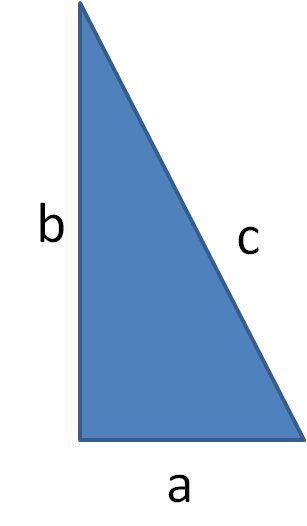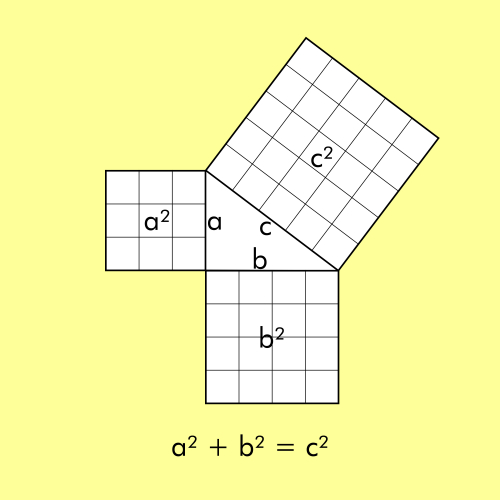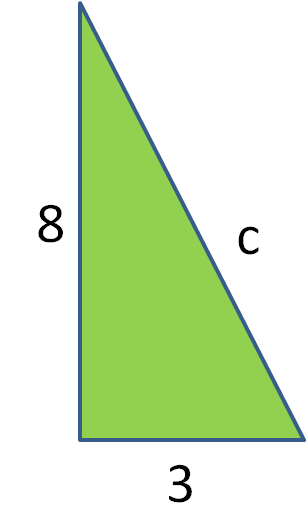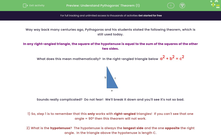Way way back many centuries ago, Pythagoras and his students stated the following theorem, which is still used today.
In any right-angled triangle, the square of the hypotenuse is equal to the sum of the squares of the other two sides.
What does this mean mathematically? In the right-angled triangle below a2 + b2 = c2

Sounds really complicated? Do not fear! We'll break it down and you'll see it's not so bad.
1) So, step 1 is to remember that this only works with right-angled triangles! If there isn't one angle of 90° then this theorem will not work.
2) What is the hypotenuse? The hypotenuse is always the longest side and the one opposite the right angle. In the triangle above, the hypotenuse is length c.
3) What is a² + b² = c²? It means that if we square the length of side a (multiply it by itself) and add it to the square of side b (multiply it by itself), then the answer will be the same as the square of side c.
Have a look at the image below, and this may make a bit more sense...

If we count the number of squares in square a (3 × 3) and then add that to the number of squares in square b (4 ×: 4) we have 9 + 16 = 25
Now, if this theorem is correct, this total should be the same as the number of squares in square c... and it is! There are 25 squares in square c.
4) So, now we know the square of side c, how do we find the actual length? From here, we need to find the square root of 25, which we know is 5
.png)
(The symbol above is the square root symbol on a calculator. We could work this one out, but if the numbers get more complicated you can use your calculator.)
Example
Here's an example where you will need to use your calculator to work out the length of side c.
Use Pythagoras' Theorem to calculate the length of the hypotenuse, c, in the following right-angled triangle. Give your answer to 3 significant figures.

Answer
Using Pythagoras' Theorem:
c2 = 32 + 82
c2 = 9 + 64
c2 = 73
c = √73
c = 8.54 (to 3 significant figures)
Reminder - 3 significant figures means that we leave our answers as the first three numbers that we see. We always need to look at the fourth number when we do this. If the fourth number is a 5 or higher then we round up the third number. For example, if the answer was 8.546, we would write this as 8.55 (3.s.f)
Let's get started!








